Did you know that indoor air pollutants have been ranked among the top five environmental risks to public health?
Yep, that means the air in your home and office could be making you sick.
Here’s why:
Indoor environments that are sealed up without any fresh air flow allow pollutants to build up and linger in greater amounts than we humans should be breathing in.
When we live and work in spaces that lack consistent ventilation, air contaminants can cause us to experience issues like headaches, dizziness, coughing, sneezing, irritability, runny nose, nausea and irritation of the eyes, ears and nose.
This is a big deal, since it’s estimated that people spend more than 90% of their time indoors!
Lucky for us, NASA scientists have been working to understand this problem and find solutions for improving air quality in spaceships. They came up with a very simple solution:
Use houseplants to clean the air!
(Click HERE for details on the NASA Clean Air Study, or click HERE for a simple summary. )
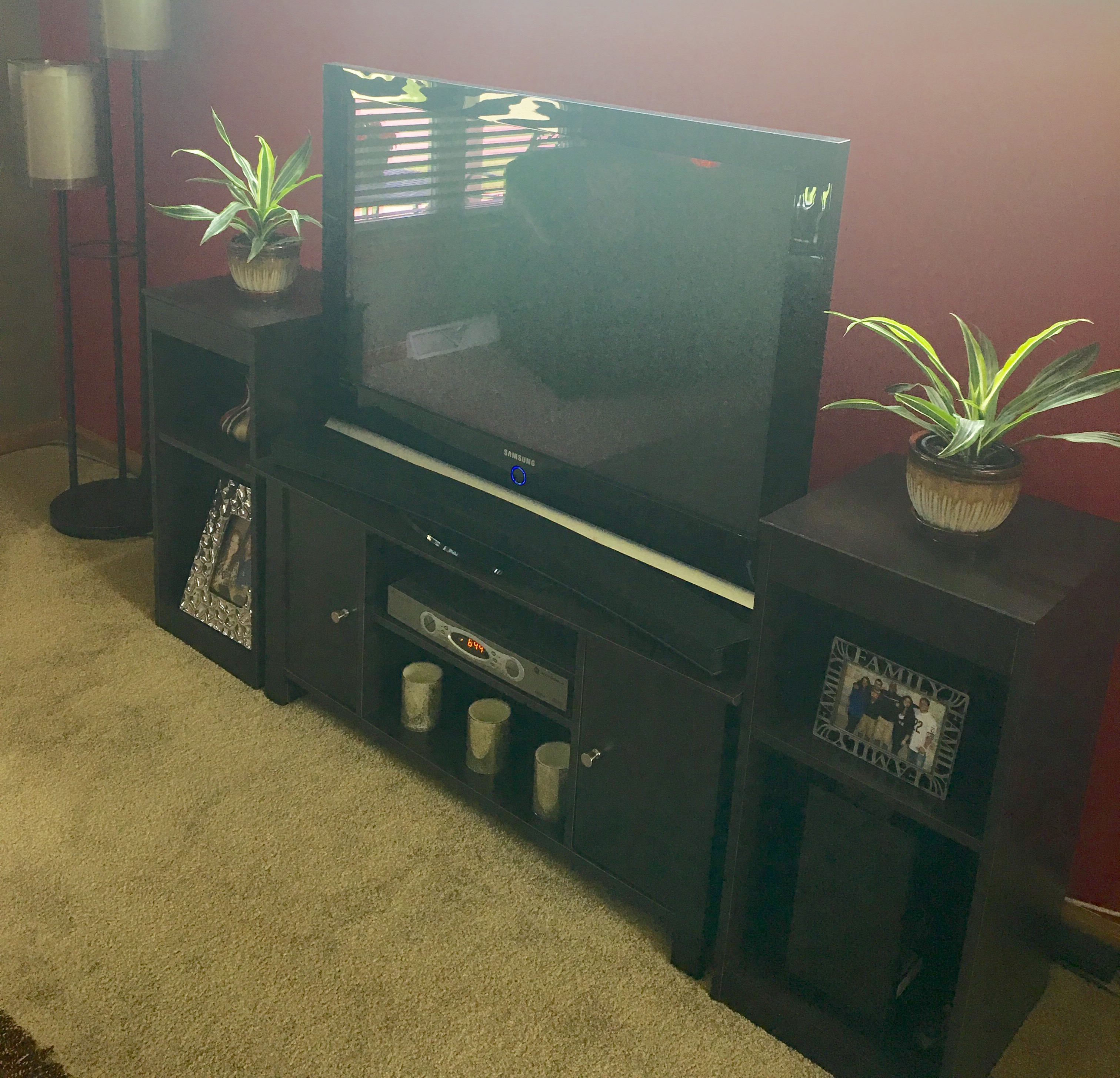
What causes indoor air pollution?
The most common sources of indoor air pollution are:
- Cleaning Products
- Carpet
- Fabrics & Upholstery
- Furnishings
- Paints & Paint Strippers
- Printers & Photocopiers
- Synthetic Building Materials & Adhesives
Indoor air pollution can also be caused by:
- Pollen
- Bacteria
- Mold
- Outdoor Air Contaminants (like car exhaust)
All of these pollutants are made worse by poorly-ventilated spaces that are sealed off from fresh air.
Houseplants save the day!
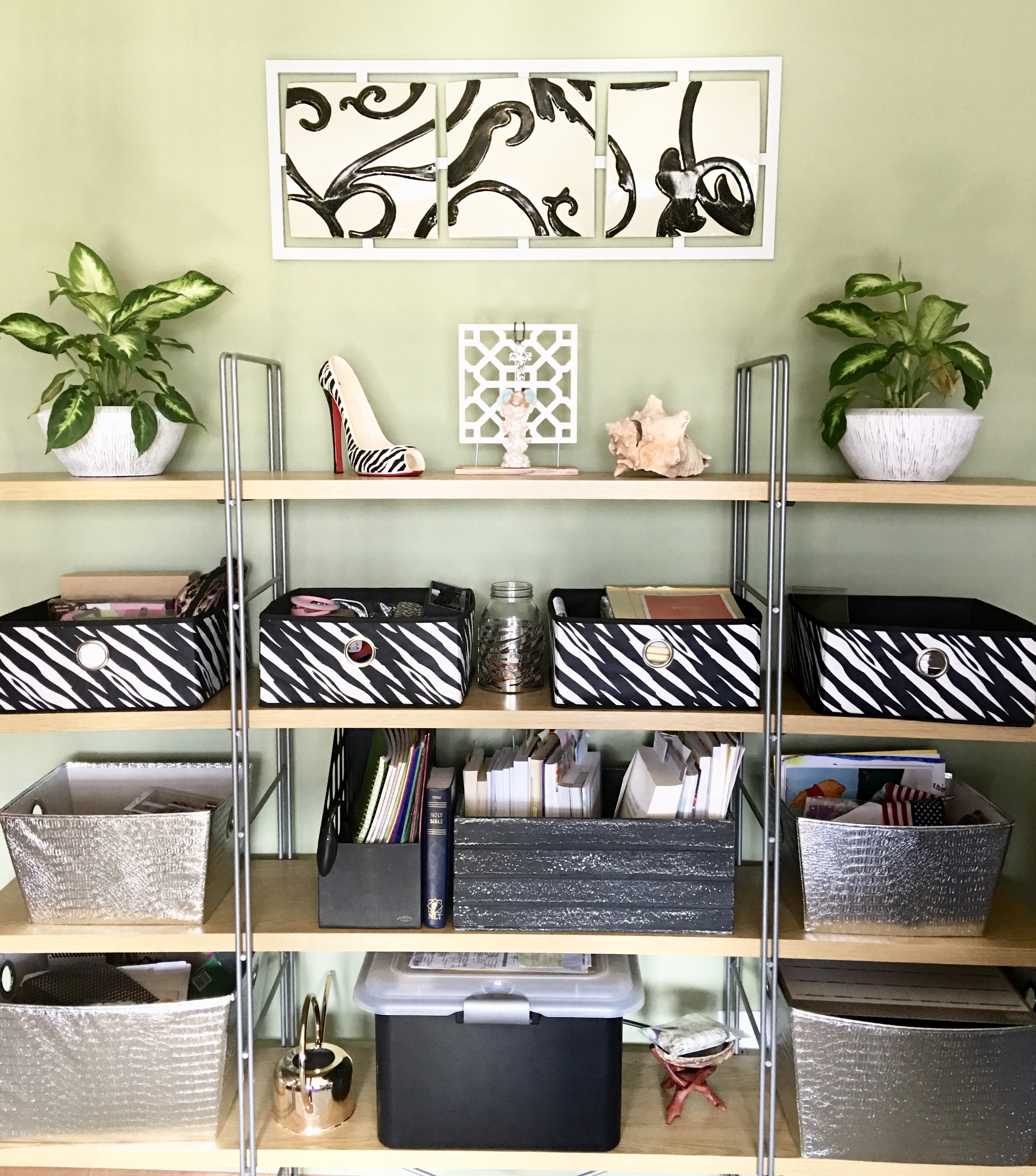
Houseplants provide an easy, affordable and natural way to combat the crud that’s invading the air inside our homes and offices.
Plus, they can make a really beautiful and stylish addition to your decor. (The photo above shows how I added two gorgeous air purifying houseplants to the bookshelf in my home office.)
So how do houseplants clean the air?
Plants absorb toxic particles from the air at the same time that they take in carbon dioxide, which is then processed into oxygen through a process called photosynthesis.
But that’s not all…
There are microorganisms in the plant’s potting soil, which help intensify the air cleansing effect.
On top of improved air quality, plants tend to make people feel all-around better. For example, studies show that hospital patients with plants in their rooms feel more positive and have lower blood pressure and stress levels.
Indoor plants also help people stay alert and reduce mental fatigue due to their oxygen output. SCORE!!!
But what if you suffer from “black thumb” syndrome?
I tried having plants in my house for years and ended up killing them left and right. My mom, who has the greenest thumb around, would regularly buy me houseplants as gifts only to find them D.O.A. at a later visit. (Sorry, mom!)
After learning about the impressive air purification effects of houseplants, I was determined to cure my black thumb!
Since I clearly had no idea what I was doing, I went to a local greenhouse and chatted with an expert. It turns out I had been buying houseplants that required loads of sunlight, which they weren’t getting. That’s why they kept kicking the bucket.
I also learned there are several air purifying houseplants that are pretty hard to kill and very easy to care for. Great news for black thumbs like me!
Each kind of plant has preferred environmental conditions, so look for a tag that comes with the plant or go online to find care instructions…like how much sunlight and water it needs. I have found loads of helpful information on houseplant411.com.
8 Air Purifying Houseplants That Are Hard to Kill
I’m going to start the list with the 5 types of air purifying houseplants I personally own.
I’m providing photos of actual plants in my house to prove I have legit kept them alive.
If I can do it, you can do it!
1) DRACAENA
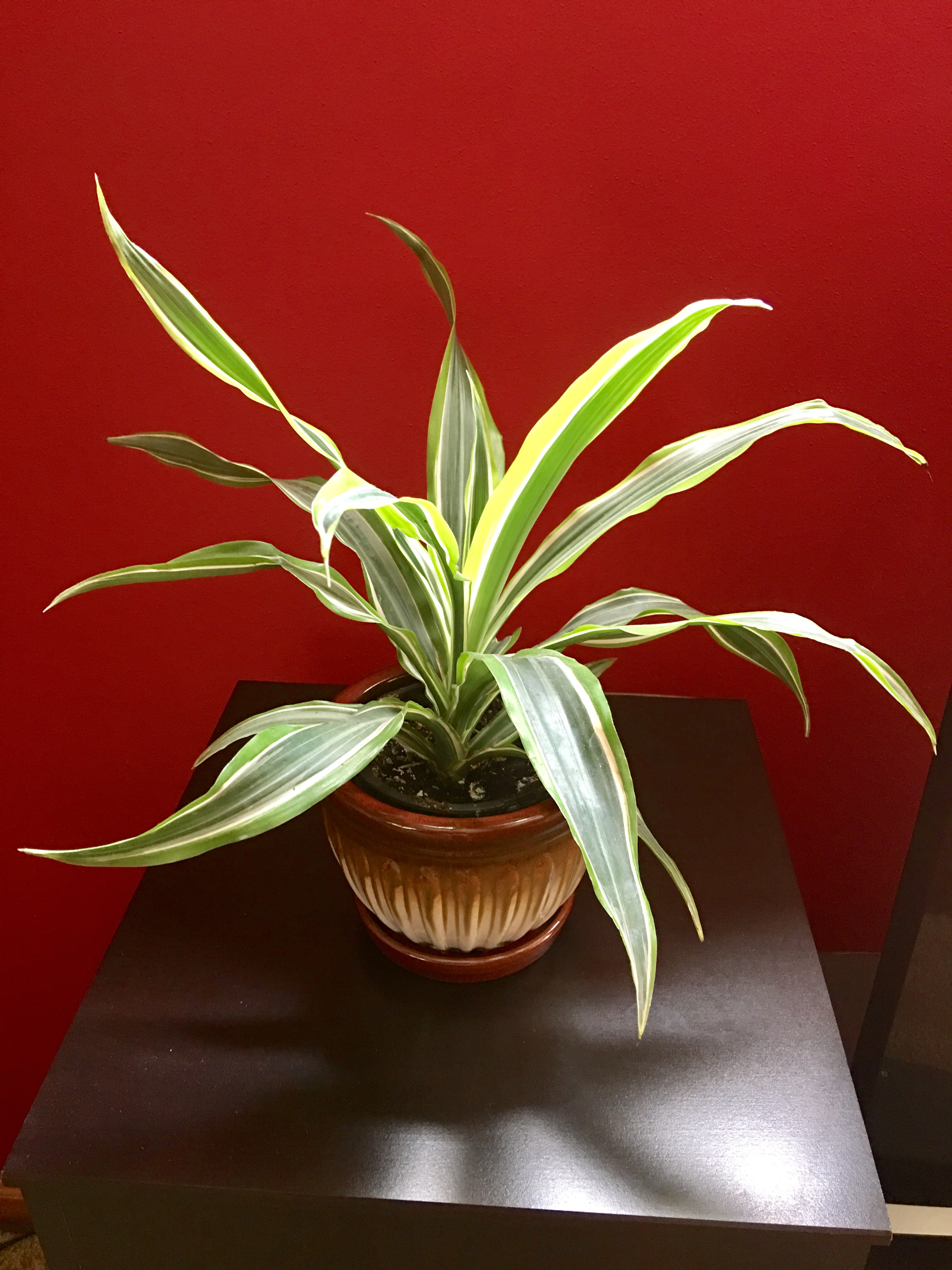
There are many different kinds of dracaena plants, making it easy to find one that’s a perfect fit for your home or office.
I have 3 different kinds in my house – the one shown in the photo above and the two pictured below:

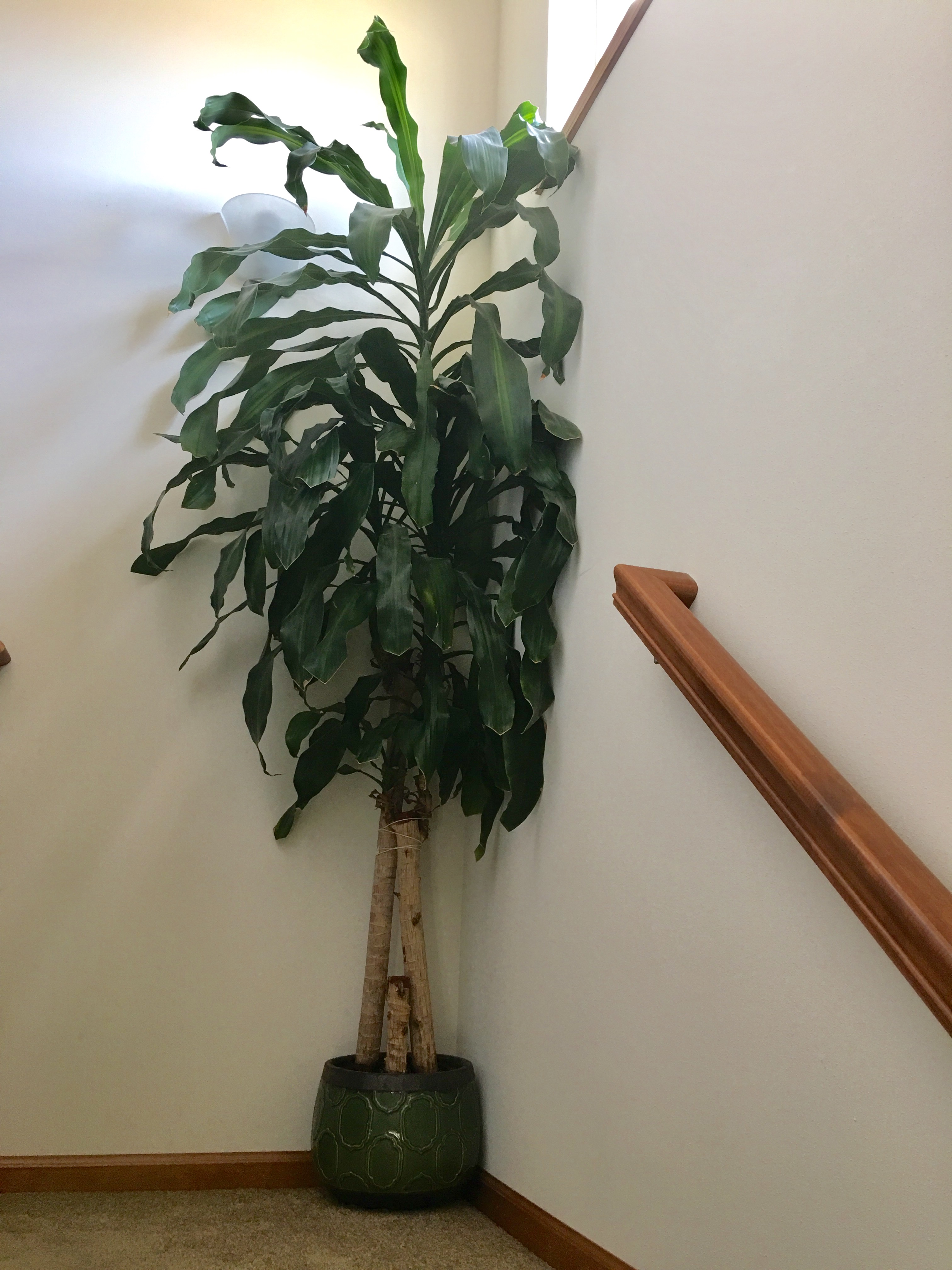
Some dracaena plants require low light, while others require lots of bright light.
Click HERE if you’d like to learn about the various types of dracaena plants and how to care for them.
WARNING: Dracaena plants are toxic to cats and dogs.
2) PEACE LILY (SPATHIPHYLLUM)
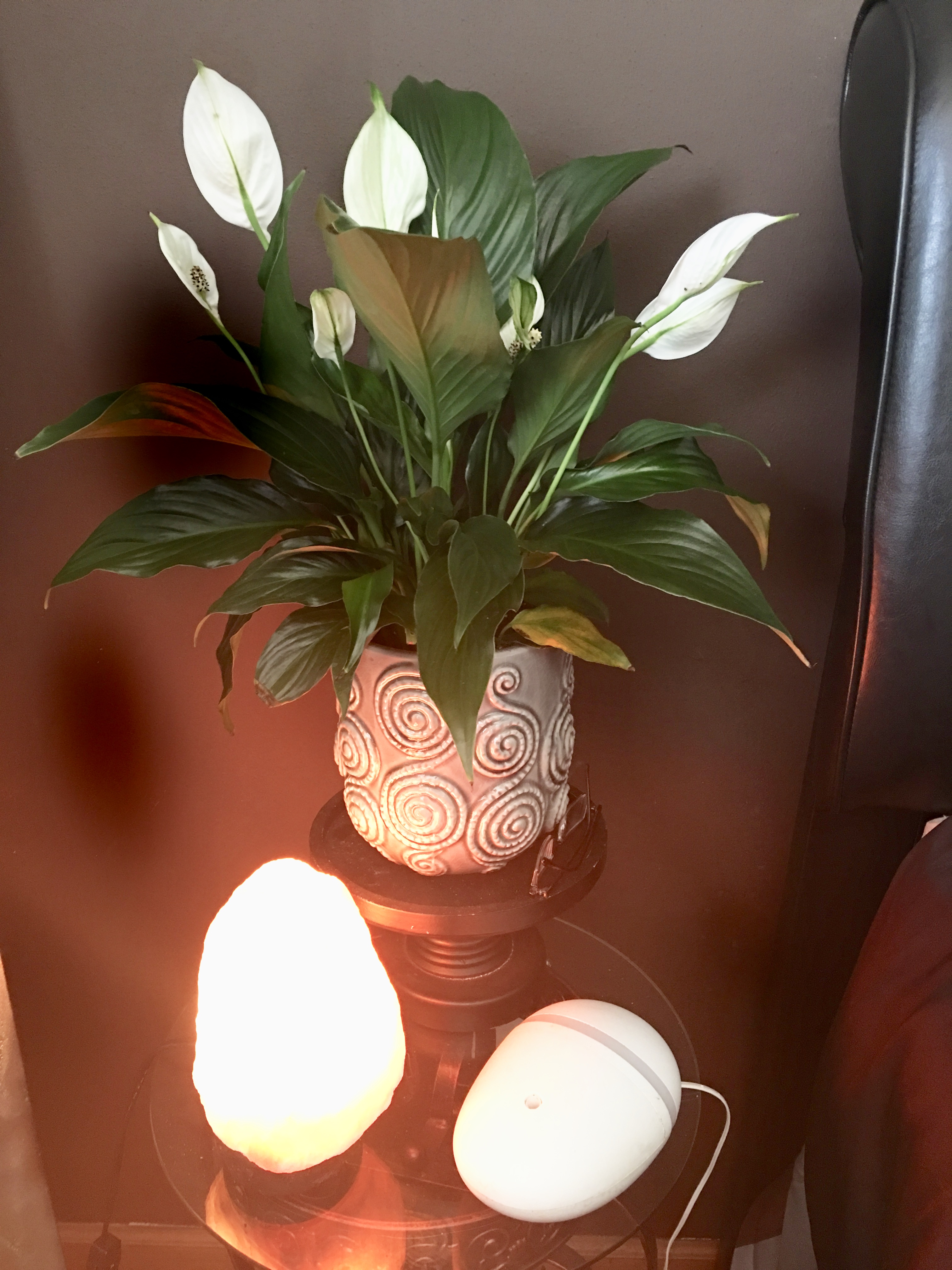
Peace lily plants are easy to grow and prefer shady spots. This makes them a great option for spaces that don’t get a lot of sunlight.
As shown in the photo above, I keep one on the nightstand next to my bed. I also keep one on the Mr.’s nightstand and another in the guest bedroom.
Click HERE if you’d like details about caring for peace lily plants.
3) SNAKE PLANT AKA “MOTHER-IN-LAW’S TONGUE” (SANSEVIERIA)
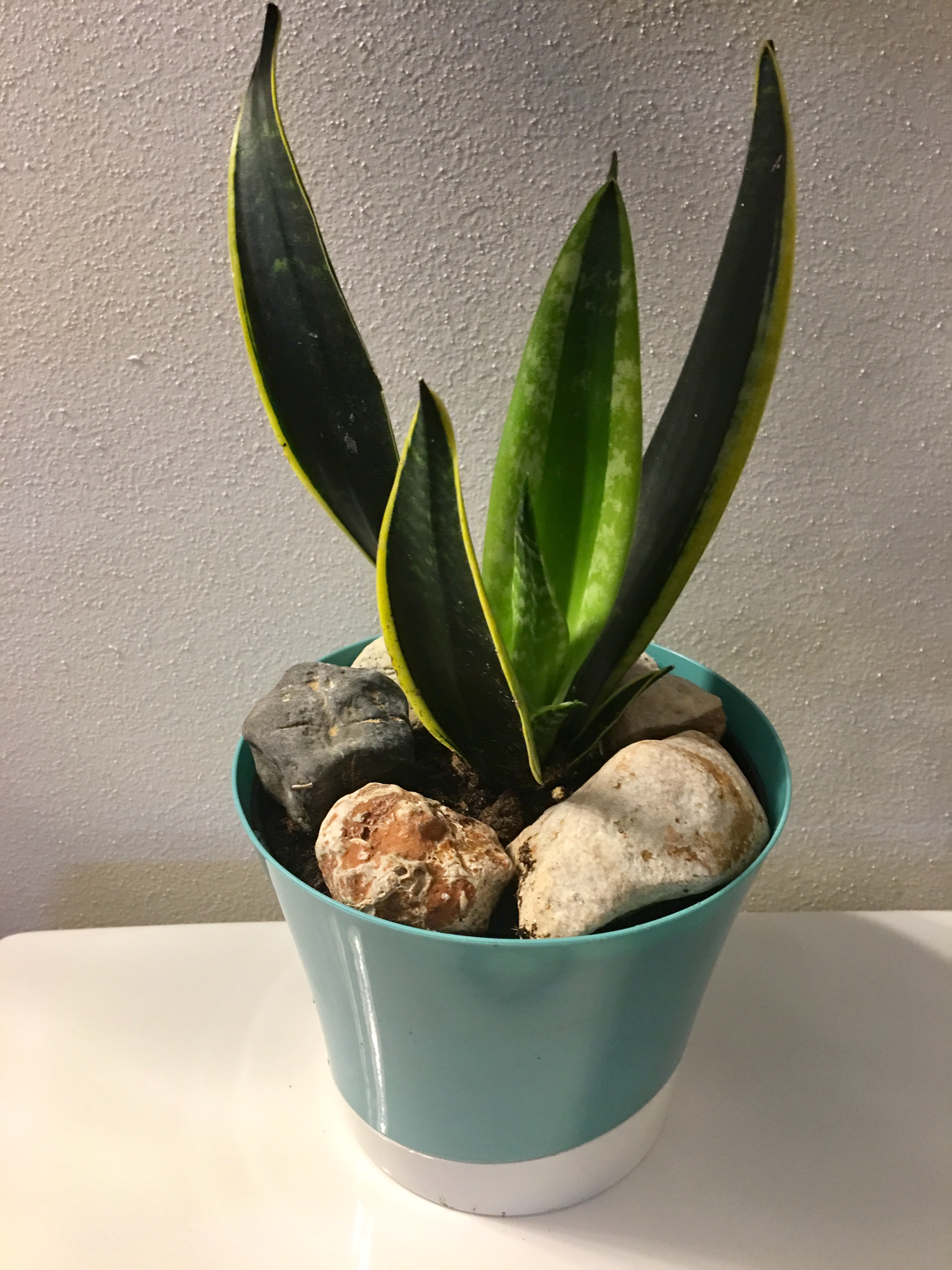
This is one of the hardest houseplants to kill and, therefore, one of my favorites for air purification!
Though it will grow faster when exposed to sunlight, it doesn’t require light to stay alive. This makes it ideal for spaces without windows or natural light.
As shown in the photo above, I keep a snake plant on the back of the toilets in my house. I also keep one in the gym space in my basement (which has no windows), as pictured below:
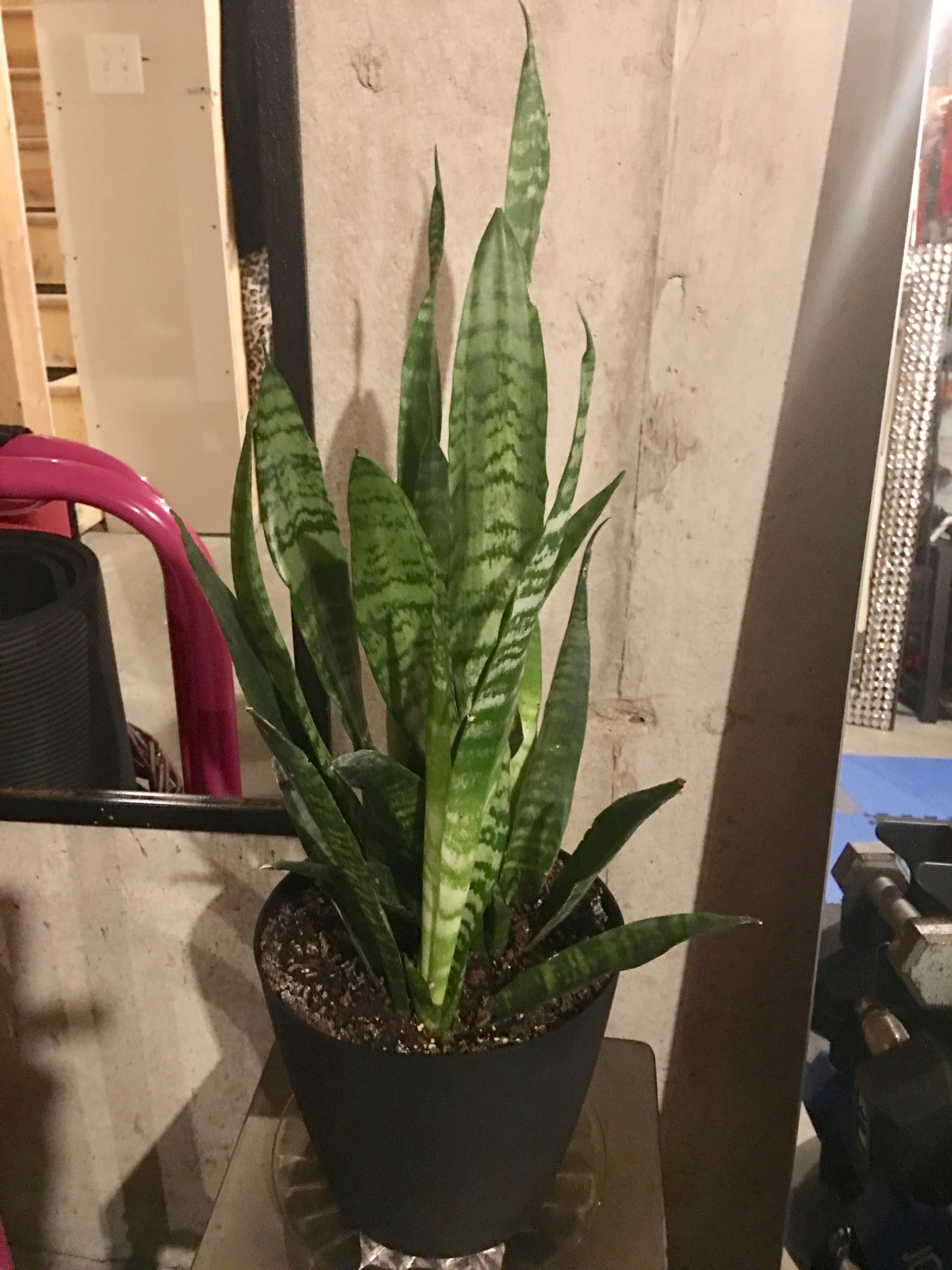
Click HERE if you’d like details about caring for snake plants.
WARNING: Snake plants are considered poisonous if consumed, so they should be kept away from plants and children.
4) ALOE VERA
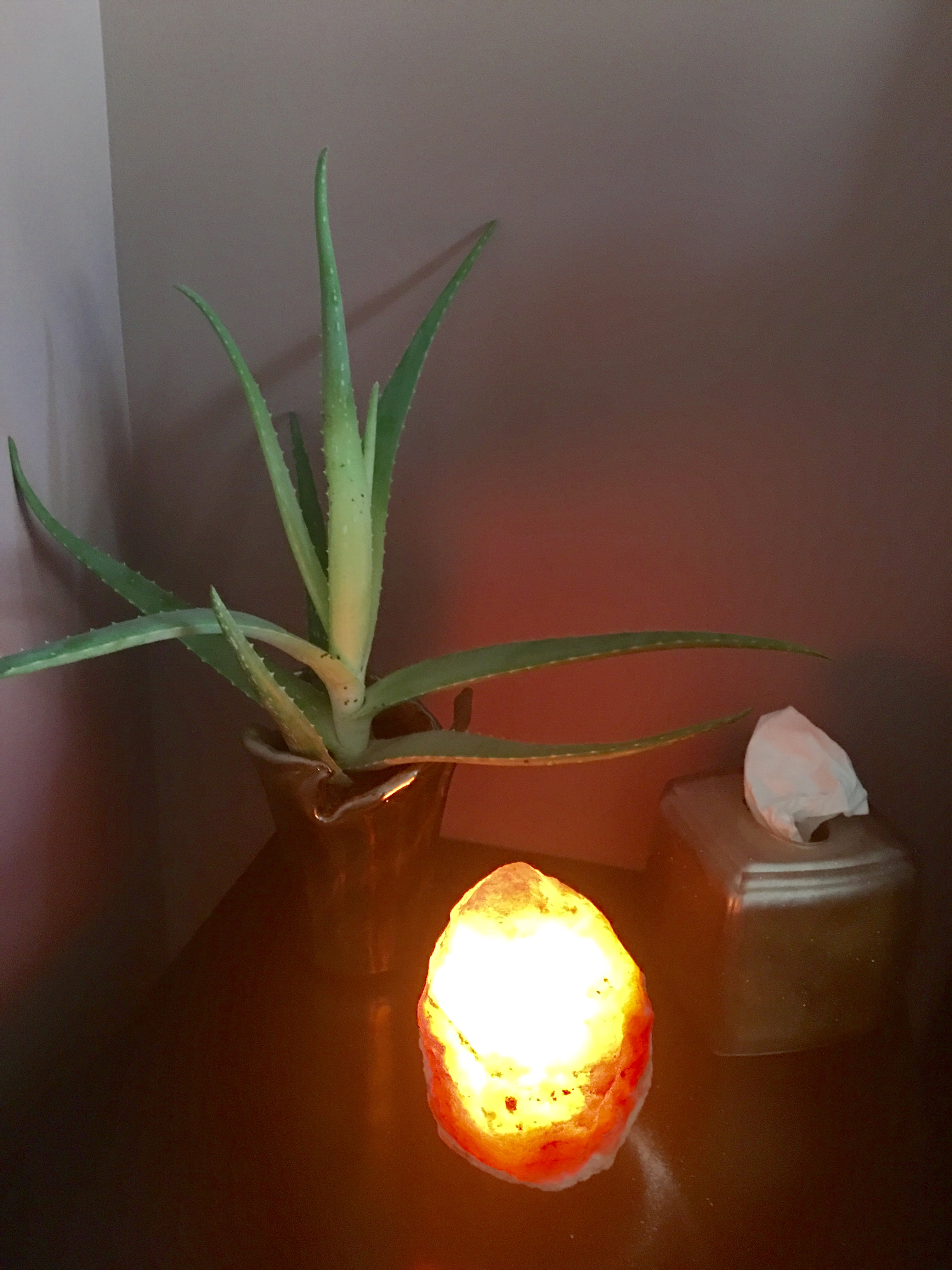
In addition to being easy to care for, aloe vera plants contain a clear liquid that’s full of health benefits.
Aloe vera juice contains compounds like vitamins, enzymes and amino acids with wound-healing, antibacterial, and anti-inflammatory properties that are great for healing skin wounds and irritations like psoriasis.
Aloe vera plants require some bright light to thrive.
Click HERE if you’d like details about caring for aloe vera plants.
5) DUMB CAIN (DIEFFENBACHIA)

These plants are gorgeous, inexpensive and easy to care for. I like them so much that I have 4 in my home.
They require medium light.
Click HERE if you’d like details about caring for dumb cain plants.
WARNING: Dumb cane plants are considered to be quite poisonous, so they should be kept away from animals and children. If you get any sap from the plant on your skin, be sure to wash it off immediately.
Below are 3 more air purifying houseplants that are hard to kill, but I don’t personally own any of these:
6) Bamboo Palm – click HERE to learn more.
7) Boston Fern – click HERE to learn more.
8) Spider Plant – click HERE to learn more.
Where’s the best place to buy houseplants?
If you have a greenhouse near you, I recommend stopping by and chatting with a plant expert. That way, they can advise you on the best air purifying plants to fill specific spaces in your home.
Plus, you can easily scope out the plants you find to be the most visually appealing.
If you don’t have a greenhouse near you or you prefer to shop online, you can find an impressive selection of houseplants on amazon. Click the links below to explore amazon’s selection:
The first time I ordered plants online, I worried that they would arrive in bad shape. I’m happy to report that I’ve had great luck so far!
More Natural Ways to Purify Indoor Air
In addition to houseplants, there are 3 other awesome ways to purify the air in your home. Click the links below to learn more:
- Essential Oils
- Himalayan Salt Lamps
- Air Doctor – Affordable Home Air Purification System (removes particles, toxic chemicals and ozone pollutants)
Cheers to transforming the health of your home with natural air purification!
With love and gratitude,
Kandi
DISCLOSURE: Any links above may be affiliate links, which means I earn a small commission – at no additional cost to you – if you purchase a product through them. (Click here to view my full Disclaimer & Disclosure statement.) This helps me continue providing FREE information to help you become a Whole Health Ninja. Thanks for your support!
